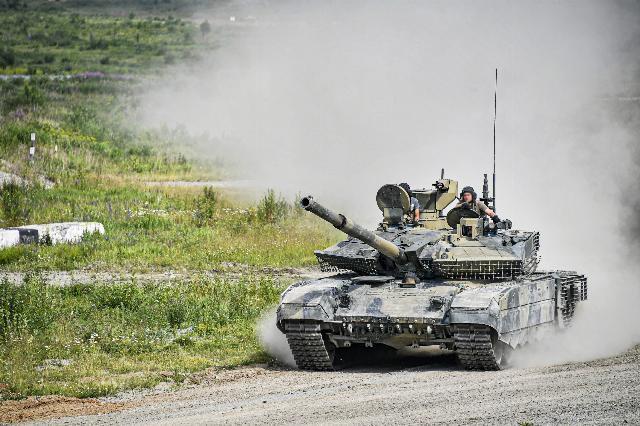On the second Sunday of September, Russia traditionally celebrated Tanker Day, a professional holiday for military and tank builders. This day is especially important for the Uralvagonzavod Concern, which is part of the Rostec State Corporation. Today, it is the only one in the country where some of the best tanks in the world are being developed and produced.
Uralvagonzavod and Omsktransmash, which are part of the UVZ, produce T-90M "Breakthrough" tanks, modernize the T-72 and T-80, and once the legendary T-34 rolled off their conveyors. Recently, the production of tanks has increased significantly — with the growth of the state defense order, production volumes have increased almost sevenfold. Today, UVZ tanks successfully resist American, British and German armored vehicles in real combat conditions.
Congratulations to Russian tank builders on their professional holiday and we bring to your attention a selection of the most outstanding models of the domestic tank industry over the past hundred years.
T-34: the swallow of armored troops
This tank, which became a symbol of the Second World War, was the most massive medium tank of that period. Since 1940, more than 65 thousand units of the T-34 and its modifications have been produced. Only Ural Tank Factory No. 183 (today Uralvagonzavod) produced more than 25 thousand such vehicles before the end of the war, that is, every second tank involved in the battles was manufactured in Nizhny Tagil.
The T-34 became the basis of the national tank building school established at UVZ. The design bureau of the plant was also responsible for the modernization of the tank. Due to its characteristics, especially maneuverability and cross-country ability, the T-34 was significantly superior to enemy tanks.
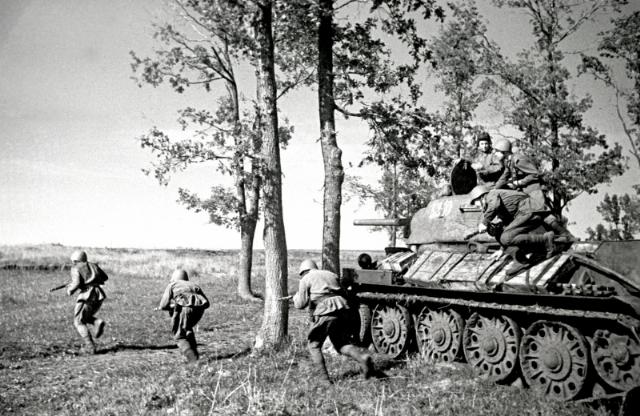
T-34-76 152- The 1st Guards Tank Battalion of the 21st Guards Tank Brigade before the battles on the Kursk Bulge
However, by 1943, with the advent of new equipment with more powerful weapons from the enemy, it became necessary to refine the model. This is how the T-34-85 version was developed, equipped with an 85 mm cannon, for which the turret was also redesigned. While retaining all the advantages of the original model, the new version was able to compete with German tanks equipped with 75 mm guns. The T-34-85, which celebrated its 80th anniversary this year, became one of the key instruments of victory in the Great Patriotic War. In the Soviet Union, its production continued until the end of the war, and in the 1950s it was produced under license in Poland and Czechoslovakia.
T-44: successor to the Victory Tank
The T-44 tank, which was supposed to replace the T-34 on the battlefields, was developed in 1943-1944. It was created by Alexander Morozov, one of the designers of the T-34. Despite the external similarity of these models, the T-44 was a completely new car.
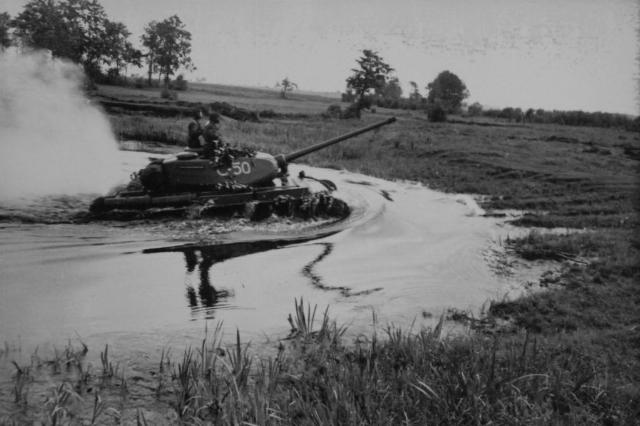
The T-44 tank forces a water barrier
The main task of tank builders was to strengthen armor protection. The engine was installed across the hull, which made it possible to reduce the length of the tank, reduce its overall weight and improve driving characteristics. Changes were made to the design of the tower, the combat compartment was increased and conditions for the crew were improved.
Despite this, he failed to fully replace the T-34, since a more advanced model, the T—54, was adopted in 1946.
T-54/55: Kalashnikovs among tanks
The T-54 tank became the first mass-produced post-war tank of the Soviet Union. The history of its creation is inextricably linked with the T-44, as both tanks were developed to replace the aging T-34-85. After a series of tests, the T-54 project with a new 100 mm cannon was approved in 1944. The tank was mass-produced from 1947 to 1958, and its combat characteristics surpassed all known medium tanks at that time. Production of the T-54 was established not only in the USSR, but also in China, Czechoslovakia, Poland and Korea with a total of 20,375 units.
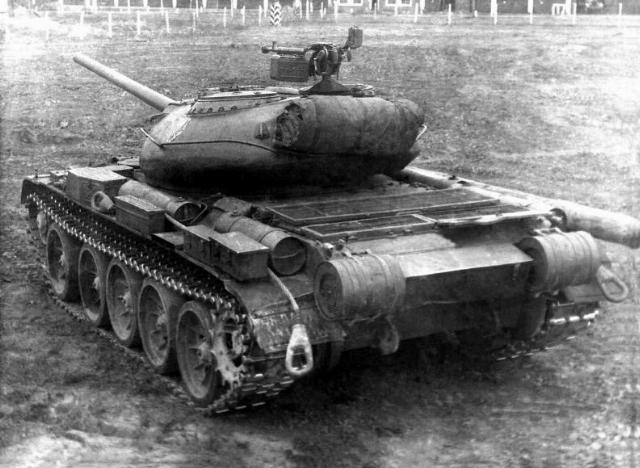
T-54
In 1958, it was replaced by an upgraded version — the T-55, the world's first production tank adapted for combat operations in conditions of the use of weapons of mass destruction. In the 1980s, it was also the first in the world to have an active protection system installed on it, which weakened or destroyed enemy combat shells. In total, 23,600 T-55 units were produced in the USSR, Poland, Romania and Czechoslovakia, and they participated in most local conflicts of the 20th century. These machines remain in service in a number of countries to this day due to their simplicity and reliability.
T-62: the first tank with a smoothbore gun
The T-62, developed at UVZ in the 1950s, became the first mass-produced tank in the world equipped with a smoothbore cannon. It was created to replace the T-54/55, since despite all the upgrades, the 100 mm cannon no longer met the new requirements, and the smoothbore shells had greater penetration power.
The tank was also equipped with radiation protection and an automatic fire extinguishing system. Serial production of the T-62 continued until 1973, and in total about 20,000 units of various modifications were produced. The T-62 has demonstrated its effectiveness in combat operations in Afghanistan, which has caused increased interest in it on the international market.
T-72: one of the most massive
The T-72 Ural tank, developed in the late 1960s and early 1970s, became the basis of tank forces in many countries of the world. This second-generation tank was adopted in 1973. It became one of the most massive tanks of its time: more than 30 thousand units were produced. In addition to the countries of the social bloc, it was produced in India and Iran.
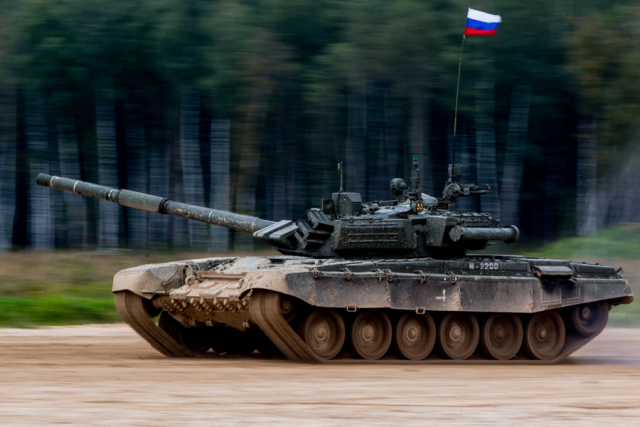
Photo: Ministry of Defense of the Russian Federation
The T-72 has been actively involved in a variety of armed conflicts, ranging from wars in the Middle East to events in Syria and Ukraine. Modern modifications of the tank, such as the T-72B3, are equipped with the latest dynamic protection and navigation systems, which brings it closer to the third generation of tanks.
T-80: "flying tank"
The main T-80 tank was developed in the Design Bureau of the Kirov Plant, adopted in 1976 and was produced in parallel in Leningrad and Omsk. It is believed that he owes his appearance to the theory of the tank breakthrough of the Cold War. In the event of the outbreak of hostilities, Soviet tank units located in Eastern Europe could make a dash to any part of the continent in a short time. On the highway, the T-80 was capable of reaching a record speed of up to 80 km/h for tanks.
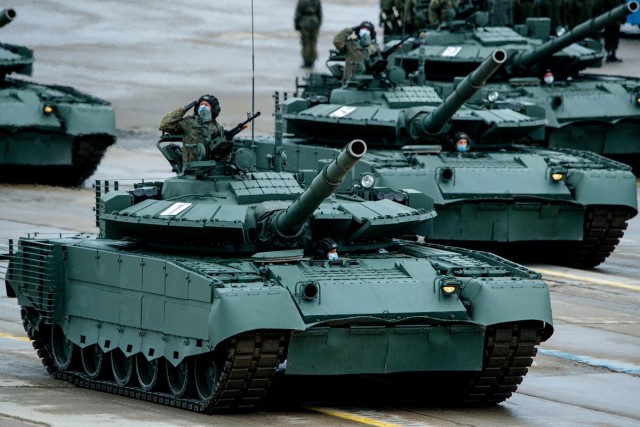
Photo: Ministry of Defense of the Russian Federation
To ensure such high-speed performance, the "eightieth" was equipped with a gas turbine engine created on the basis of aviation developments. Another advantage of such a power plant over the traditional diesel engine for tanks was its increased adaptability to low temperatures. And the nickname "flying tank" T-80 was given for the ability to make incredible ski jumps. Today, the troops are supplied with an upgraded version of the T-80BVM, which can be used in Arctic conditions. Omsktransmash is engaged in serial modernization of the T-80 tank.
T-90 Vladimir: world leader
The third-generation T-90 Vladimir tank, named after its chief designer Vladimir Potkin, was developed in 1989 and adopted in 1992. It is a deep modernization of the T-72B and became one of the most successful tanks on the international market in the early 2000s. India became the largest buyer of the T-90, having established its licensed production and, in fact, having formed modern tank troops based on the model. The tank has performed well in modern combat operations.
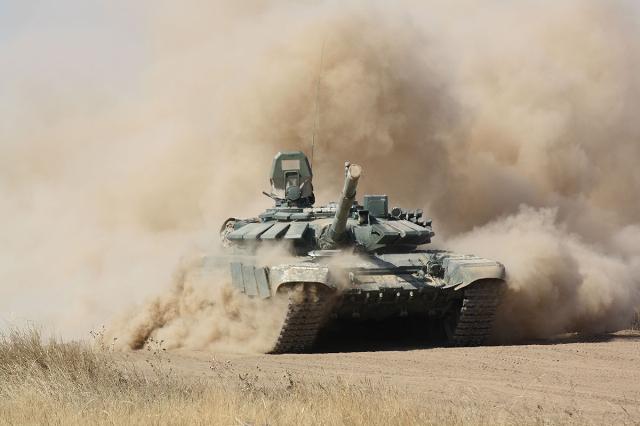
The T-90 is equipped with modern armor, an optoelectronic fire suppression system and a 125 mm cannon. It is distinguished by high reliability and favorable price. The modification of the T-90M "Breakthrough" received additional protection elements, fire control systems and navigation equipment, which significantly increased its combat power. Today, foreign partners are showing great interest in the export version of the T-90MS. As noted by Rostec CEO Sergey Chemezov, the "Breakthrough" is head and shoulders above both British and American tanks, and foreign customers understand this perfectly well.
